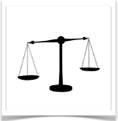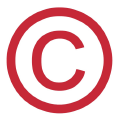Put simply, the copy of your newsletter is all the words that make up your communication. Your sentences, word selection, subject matter, tone and style make all the difference between a compelling read and a newsletter to avoid at all costs.
Spell Correctly or Know Where Your Spell Check Is
Some of you out there were great at spelling and have degrees in English. But many successful businesses were built by those who were too busy learning to be great at what they do than to worry about how to spell "congratulations." There are also many small business owners for whom English is a

second language. Good work, you should be very proud. But you know, you have decided to do professional email marketing, so don't blow all these great features and stellar designs on spelling mistakes. Some people won't know, but some will. They will put your company in a category that you don't want to be in, especially when it has nothing to do with your product. Your
email editor should have a spell check built in. If it doesn't, write the draft in MS Word or Pages and use their.
Get a Second Opinion
If you're prone to grammar mistakes like the difference between "your" and "you're," you might want to write your content first in a program like Microsoft Word and look for the green underlining that denotes a possible grammar issue. Grammar rules aren't absolute, and they can vary regionally. But most of us are guilty of common mistakes that others can catch pretty easily. You know what helps tremendously? A human proofreader you can trust. Even if they're not an English teacher, they are another set of eyes that can see what you repeatedly didn't.
Providing Fresh Content

If you're the only company that sells a goldfish training kit, chances are that what you're sending will be interesting because nobody has heard of such a thing (neither did we until such a company became a Benchmark customer). But if that company always sent the same story or slight variations on it, all but the die-hard enthusiast would eventually stop reading.
If you're a realtor or consultant, there's lots of competition. You have to find the new stories, topics and angles if you want to get and keep your newsletter read. So how do you put the NEW in newsletter?
Be Current
Let's take the example of
email marketing for real estate agents. True, houses have always sold. But the smart realtor knows that trends change. How did this house sell? Why did it sell now? No matter what your industry, you need to find fresh examples to keep the conversation new.
Sell the Story
If you're a grocer selling eggs, you could just put the price down and hope that you're selling them for the cheapest price in town. But maybe there's a story in those crates. Are your eggs organic? Did they come from chickens that are known for quality? Were they genetically altered? Actually, please skip that story.
Be Personal
Let's get back to the realtor for a second. Those homes just keep selling (hopefully, at least), but the people who buy and sell those homes are all unique. A profile on the family who bought or sold the house and how their lives have changed does more than say that you can sell homes – it says that you can change lives.
And Don't Be Stale
It isn't enough to say, "Don't be the opposite of fresh." Stale doesn't just mean that you're repeating old news. It could also be the way that you talk about new topics and specials. If your idea of news is using the same copy as before and just changing the names and addresses of the new protagonists, you're being lazy and your repeat readers will tire of your newsletters.
Don't Be Desperate
Being friendly is one thing, but disclosing a sob story about how bad your business is doing might only work in the most altruistic of communities. People need to believe that your business is successful enough to offer expertise and support should they need it.
But Be Direct
Don't be vague about what you expect your customer to do. If you want them to come talk to you about an appointment, come out and say it.
But Watch Your Tone
Even if you are a salesman, one of the worst things you can do is to come across as one. The people on your list have encountered all the tricks in the book in their lives as consumers. Talk to them in a friendly way without coming across as shady. You might have a limited supply of Siberian chocolate this month, but saying "you snooze, you lose" is off-putting. Saying this is your "last chance" when it obviously isn't true is even worse.
Or At Least Target Your Tone
We've gone over target markets, demographics and psychographics in our
list segmentation section, so you know that you can cater your message to a variety of factors like age, city and consumer behavior. So let's just say that you wouldn't write a newsletter for retired auto workers in Detroit in the same way that you'd position one for the eyes of college kids in California.
Be Truthful
You or your company is responsible for every word you put in your communications. You can't make outlandish claims or make up the facts. This is a litigious time in society, where someone could take you to court if you don't live up to what you've promised.

Don't Libel Anyone
Libel is a written or broadcast statement that is presented as truth and casts someone or some entity in a negative light. Again, we're not your attorneys, so maybe its best to avoid saying anything negative about anybody in any way.
Don't Copy Your Copy
Plagiarism is representing someone else's work, thoughts or writings as your own. Don't do it. Does that mean you can't talk about what someone else said or wrote about? Of course not, but
give credit where credit is due.
And Be Wary of Copyrighted Content

Doesn't it sound like fun to motivate your clients by including a link to download "Don't Stop Believing" by Journey? Does it also sound like fun to sit in court to defend yourself from the RIAA? Music, videos, and even photographs are not free to use just because you saw it for free on the web. Especially because your business is at stake, be mindful to use only works of art for which you have permission.
Link to What You Don't Have Room To Include
You don't have to support every bit of information you include with more information that interrupts the flow of your article. If the info is on the web,
provide a link to it.
Embed Lengthy Documents

If you want to include that company report, but don't want to send out a thirty page newsletter, you can
upload the doc in the editor and just provide a link to it. Your readers can glance over the article, and when they're ready to read the doc, they can click the link and read it in a new page on their web browser.
Offer Consistency
You want to keep your content fresh, but give your communications a steady professional tone that your subscribers can count on. That doesn't mean that you can't have different writers for different articles or newsletters, but if your

email marketing is working for you, keep the tone and voice of it similar to your previous newsletters.
Lean on Statistics
There's no proof like good ol' proof. If you're selling alarm systems, a stat about the amount of break-ins in a particular city is more motivating than a just saying, "The neighborhood is not safe."